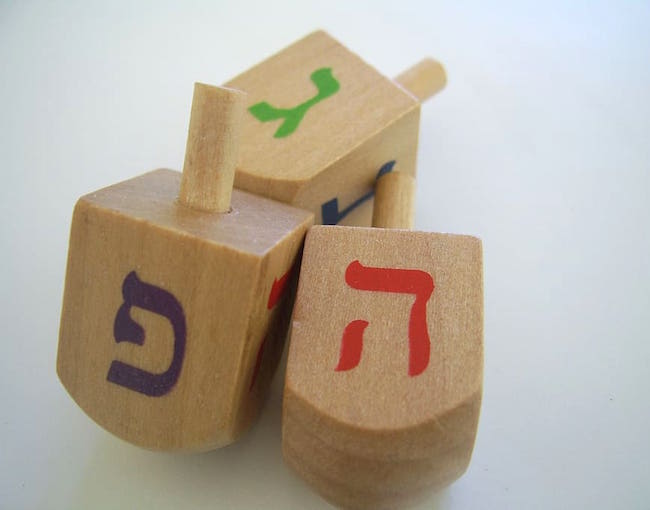Lesson 4
Interpret Division Expressions
Warm-up: Number Talk: More or Less? (10 minutes)
Narrative
The purpose of this Number Talk is to elicit strategies and understandings students have for subtracting within 1,000, particularly around adding up to find differences. These understandings help students develop fluency for subtracting within 1,000.
Launch
- Display one expression.
- “Give me a signal when you have an answer and can explain how you got it.”
- 1 minute: quiet think time
Activity
- Record answers and strategy.
- Keep expressions and work displayed.
- Repeat with each expression.
Student Facing
Find the value of each expression mentally.
- \(500 - 475\)
- \(504 - 475\)
- \(512 - 475\)
- \(512 - 449\)
Student Response
For access, consult one of our IM Certified Partners.
Activity Synthesis
- ”Why is the value of \(512 - 475\) greater than the value of \(504 - 475\)?” (Since the 475 doesn’t change, but 512 is larger than 504, the difference between the numbers is greater.)
- Consider asking:
- “Who can restate _____’s reasoning in a different way?”
- “Did anyone have the same strategy but would explain it differently?”
- “Did anyone approach the problem in a different way?”
- “Does anyone want to add on to _____’s strategy?”
Activity 1: Spinning Tops (10 minutes)
Narrative
The purpose of this activity is for students to match division expressions to division situations. Students should justify their matches by articulating how the numbers in the expression connect to what is happening in the situation (MP2).
Supports accessibility for: Attention, Memory
Launch
- Groups of 2
- Display the image.
- “These are toys called spinning tops, or sometimes just called tops. They are played with in many cultures. What are some other toys that you know about?”
- 30 seconds: quiet think time
- Share responses.
- “Now we’re going to work with some situations that involve spinning tops. We’ll see situations about other toys in upcoming activities.”
Activity
- “Work with your partner to match each situation to a division expression.”
- 3–5 minutes: partner work time
- Monitor for students who can justify their matches by explaining how the numbers in the expression represent the situation.
Student Facing





Match each situation about spinning tops with an expression that can represent it.
1. Clare has a collection of 24 spinning tops in four colors. She has the same number of tops in black, white, red, and green. How many tops of each color does she have?
A. \(24 \div 2\)
2. Priya and her friend are decorating 24 wooden tops with paint. If each person is painting the same number of tops, how many tops is each person painting?
B. \(12 \div 2\)
3. A store has 24 tops from around the world displayed in 6 boxes. Each box contains the same number of tops. How many tops are in each box?
C. \(24 \div 4\)
4. Diego has 12 trompos that he wants to give as gifts. If he gives each friend 2 trompos, how many friends can get them as gifts?
D. \(12 \div 6\)
5. Six friends are playing with 12 dreidels. If everyone is playing with the same number of dreidels, how many dreidels does each person have?
E. \(24 \div 6\)
Student Response
For access, consult one of our IM Certified Partners.
Activity Synthesis
- Select previously identified students to share.
- Consider asking: “How do the numbers in the expression represent what is in the situation?”
Activity 2: Cars in Boxes (10 minutes)
Narrative
The purpose of this activity is for students to understand that the same division expression can be used to represent both types of division situations. Students are given two situations and asked to match a division expression to one of the situations, but the expression matches both situations given. It is okay if students do not recognize that the expression matches both situations in the activity, because it will be discussed in the activity synthesis. Students learn that the number we are dividing by is called the divisor and understand that the divisor can represent the size of the groups or the number of groups. When students explain that a divisor can be interpreted differently based on the situation it represents, they reason abstractly and quantitatively (MP2).
Advances: Conversing, Reading
Launch
- Groups of 2
- “Let’s look a bit closer at division expressions. Take a minute to read these two situations.”
- 1 minute: quiet think time
Activity
- “Work with your partner to decide which situation the expression represents.”
- 2–3 minutes: partner work time
Student Facing
Consider these two situations.
A. Han has 21 toy cars. He puts the same number of cars in each of 3 boxes. How many cars will be in each box?
B. Han has 21 toy cars. He wants to put 3 cars in each box. How many boxes will he need?
Which situation does the expression \(21 \div 3\) represent? Explain your reasoning.

Student Response
For access, consult one of our IM Certified Partners.
Activity Synthesis
- Invite students to share their responses and reasoning.
- “How can the same expression represent two different situations?” (Both situations involve the same numbers, 21 and 3. Both situations involve putting 21 objects into equal groups. In one case, the 3 is the number of objects in the group, but in the other, it is the number of groups. Both situations are talking about 21 divided by 3, just in different ways.)
- “We noticed that the number that we are dividing by, 3, can have two different meanings. It can mean 3 groups or 3 objects in each group.”
- “When we divide, the number we divide by is called the divisor. In the expression \(27 \div 3\), the divisor is 3.”
Activity 3: Stacks of Blocks (15 minutes)
Narrative
The purpose of this activity is for students to apply what they have learned about representations of division to match drawings and expressions to division situations (MP2). In doing so, they solidify their understanding that the same division expression can represent both types of division situations. The given drawings enable students to see the number of groups and how many objects are in each group. The work here helps students make connections across the three representations before they write their own division expressions and solve division problems in a subsequent lesson. When students describe how one equation can represent different stories they attend to precision in the language they use and the correspondence that they establish between the equation and the stories (MP6).
Launch
- Groups of 2
- “Now that we’ve represented division situations with both drawings and expressions, we’re going to match some situations with both representations.”
- “Read these situations.”
- 1–2 minutes: quiet think time
- “Talk to your partner about what is the same and what is different about these situations.”
- 2–3 minutes: partner discussion
- Share responses.
Activity
- “Now work with your partner to match each situation to a drawing and an expression that represents the situation.”
- 3–5 minutes: partner work time
Student Facing
Match each situation to a drawing and an expression that represent the situation. Be prepared to explain your reasoning.
- Kiran uses 6 blocks to make stacks. Each stack has 2 blocks. How many stacks are there?
- Han uses 6 blocks to make two equal stacks. How many blocks are in each stack?
- Jada uses 6 blocks to build stacks with 3 blocks each. How many stacks are there?
- Mai uses 6 blocks to make 3 equal stacks. How many blocks are in each stack?
drawings
A

B

expressions
C
\(6 \div 2\)
D
\(6 \div 3\)
Student Response
For access, consult one of our IM Certified Partners.
Activity Synthesis
- “Let’s consider the first two situations about Kiran and Han. Why can we use the same expression to represent these situations but different drawings?” (Both situations are represented by 6 divided by 2, but in the first situation the 2, or the divisor, is how many blocks are in each stack. In the second situation the 2 is the number of stacks.)
- “Now let’s look at Han and Jada’s situations. Why can we use the same drawing to represent these situations but not the same expression?” (Both of these situations describe 2 groups of 3, so they match the same drawing. The first situation is 6 blocks divided between 2 stacks and the second situation is 6 blocks divided into groups of 3.)
Lesson Synthesis
Lesson Synthesis
Display some expressions from the lesson, such as \(6 \div 2\) and \(6 \div 3\).
“Is there any way to tell the expressions that represent a ‘how many groups?’ problem from the expressions that represent a ‘how many in each group?’ problem?” (No, not by just looking at the expression. We would have to look back at the situation or the drawing.)
“Division expressions can be interpreted two ways and we can’t really tell what type of division situation is being represented unless we have a situation or a drawing that goes with the expression.”
Cool-down: Han’s Tops (5 minutes)
Cool-Down
For access, consult one of our IM Certified Partners.